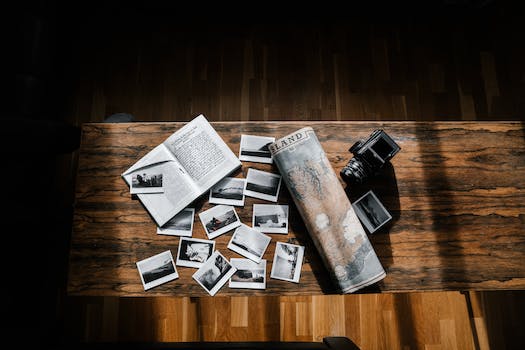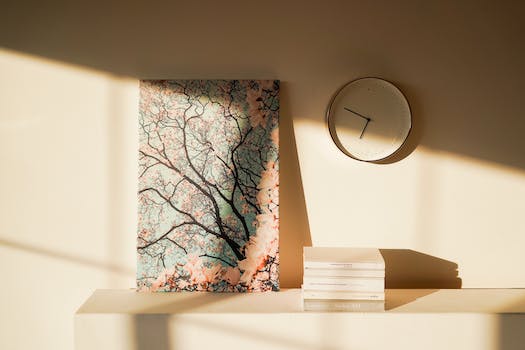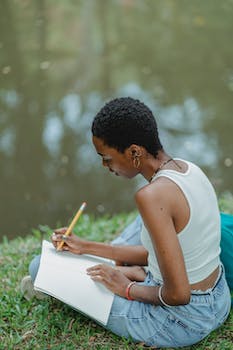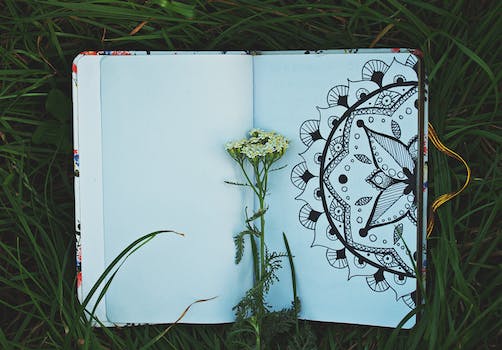

-
Table of Contents
"Unlock your artistic potential and master the art of drawing faces from memory."
Introduction
Mastering the Art of Drawing Faces from Memory is a skill that requires practice, observation, and understanding of facial proportions and features. It involves the ability to accurately recreate the unique characteristics and expressions of a person's face without relying on reference materials. This skill is highly valued in various artistic disciplines, such as portraiture, character design, and illustration. By honing this ability, artists can create compelling and realistic representations of individuals, capturing their essence and personality through their artwork.
Techniques for Improving Facial Proportions in Memory Drawing
Mastering the Art of Drawing Faces from Memory
Drawing faces from memory can be a challenging task for many artists. It requires not only a keen eye for detail but also a deep understanding of facial proportions. Without a reference, it can be easy to make mistakes and end up with a drawing that doesn't quite capture the essence of the person you are trying to depict. However, with the right techniques and practice, it is possible to improve your ability to draw faces from memory.
One of the most important aspects of drawing faces from memory is understanding facial proportions. The human face follows certain guidelines when it comes to the placement and size of its features. By studying these guidelines and practicing them, you can improve your ability to draw faces accurately.
One technique that can help you improve your facial proportions in memory drawing is to break down the face into basic shapes. Start by drawing a circle to represent the head and then divide it into halves vertically and horizontally. This will give you a guide for placing the features of the face.
Next, focus on the placement of the eyes. The eyes are usually located halfway between the top of the head and the chin. Divide the space between the horizontal line and the chin into five equal parts. The eyes should be placed on the second and fourth lines from the top. Remember to leave enough space between the eyes for the nose.
Speaking of the nose, it is important to understand its proportions as well. The nose usually starts at the same level as the eyes and extends down to about halfway between the eyes and the chin. It is helpful to think of the nose as a triangle, with the base being the nostrils and the tip pointing towards the chin.
Moving on to the mouth, it is typically located halfway between the bottom of the nose and the chin. The width of the mouth is usually about the same as the distance between the pupils of the eyes. Pay attention to the shape of the lips and the placement of the teeth, as these details can greatly affect the likeness of your drawing.
Lastly, don't forget about the ears. Ears are often overlooked in memory drawing, but they play an important role in capturing the likeness of a person. The top of the ear usually lines up with the eyebrows, while the bottom of the ear lines up with the bottom of the nose.
Practicing these techniques regularly will help you improve your ability to draw faces from memory. Start by drawing simple faces and gradually work your way up to more complex ones. Pay attention to the proportions and make adjustments as needed. Over time, you will develop a better understanding of facial features and be able to draw faces from memory with confidence.
In conclusion, drawing faces from memory is a skill that can be mastered with practice and the right techniques. Understanding facial proportions is key to capturing the likeness of a person in your drawings. By breaking down the face into basic shapes and studying the placement of features, you can improve your ability to draw faces accurately. Remember to practice regularly and be patient with yourself. With time and dedication, you will be able to master the art of drawing faces from memory.
Understanding Facial Expressions and Emotions in Memory Drawing
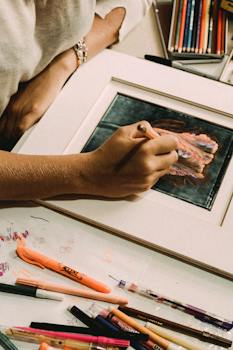
Mastering the Art of Drawing Faces from Memory
Understanding Facial Expressions and Emotions in Memory Drawing
Drawing faces from memory can be a challenging task for many artists. Capturing the intricate details and nuances of facial expressions and emotions requires a deep understanding of human anatomy and psychology. In this article, we will explore the key elements to consider when attempting to master the art of drawing faces from memory.
One of the fundamental aspects of drawing faces from memory is understanding the basic structure of the human face. The face can be divided into different regions, such as the forehead, eyes, nose, mouth, and chin. Each of these regions has its own unique characteristics and proportions that need to be accurately represented in a drawing. By studying the underlying bone structure and muscle groups, artists can gain a better understanding of how these regions interact and create different facial expressions.
Facial expressions play a crucial role in conveying emotions and capturing them accurately is essential in memory drawing. Emotions can be expressed through various facial features, such as the position of the eyebrows, the shape of the eyes, and the curvature of the mouth. For example, a raised eyebrow can indicate surprise or curiosity, while a downturned mouth can convey sadness or disappointment. By observing and studying these subtle changes in facial features, artists can develop a deeper understanding of how emotions are expressed and translate them onto paper.
Another important aspect to consider when drawing faces from memory is the use of light and shadow. Light and shadow can dramatically alter the appearance of a face, highlighting certain features and creating depth. By understanding how light interacts with different facial structures, artists can create more realistic and three-dimensional drawings. For example, a strong light source from one side can create a cast shadow on the opposite side of the face, emphasizing the contours and adding depth. By carefully observing and studying the interplay of light and shadow, artists can enhance the realism of their memory drawings.
Practice is key when it comes to mastering the art of drawing faces from memory. By regularly sketching and studying different facial expressions, artists can improve their ability to recall and recreate them accurately. It is important to practice both from reference photos and from memory, as this helps to develop a visual library of facial features and expressions. Additionally, studying the works of master artists who have excelled in capturing facial expressions can provide valuable insights and inspiration.
In conclusion, mastering the art of drawing faces from memory requires a deep understanding of facial anatomy, emotions, and the interplay of light and shadow. By studying the basic structure of the face, observing and understanding facial expressions, and practicing regularly, artists can improve their ability to accurately capture the intricacies of the human face. Remember, drawing faces from memory is a skill that can be developed and refined over time, so don't be discouraged by initial challenges. With dedication and practice, you can become proficient in this art form and create stunning drawings that truly capture the essence of human emotions.
Tips for Capturing Unique Facial Features in Memory Drawing
Mastering the Art of Drawing Faces from Memory
Drawing faces from memory can be a challenging task for many artists. It requires not only a keen eye for detail but also a deep understanding of the unique features that make each face distinct. In this article, we will explore some tips and techniques that can help you capture these unique facial features in your memory drawings.
One of the first things to keep in mind when drawing faces from memory is the importance of observation. Take the time to study faces in real life, paying close attention to the shapes and proportions of different features. Notice how the eyes, nose, and mouth relate to each other, and how they vary from person to person. By training your eye to observe these details, you will be better equipped to recreate them from memory.
Another helpful technique is to break down the face into basic shapes. Start by sketching a rough oval to represent the overall shape of the head. Then, divide the oval into halves vertically and horizontally to establish the placement of the facial features. This simple framework will serve as a guide as you add more detail to your drawing.
When it comes to capturing the unique features of a face, it is essential to pay attention to the eyes. The eyes are often referred to as the windows to the soul, and they can convey a wealth of emotion and personality. Take note of the shape, size, and placement of the eyes, as well as the eyebrows and eyelashes. These details can greatly influence the overall expression of the face.
The nose is another feature that can greatly impact the likeness of a portrait. Study the different shapes and sizes of noses, and how they relate to the surrounding features. Pay attention to the nostrils, the bridge of the nose, and any unique characteristics such as bumps or curves. By accurately capturing these details, you can bring your memory drawings to life.
The mouth is yet another crucial element to consider when drawing faces from memory. Notice the shape and size of the lips, as well as any distinguishing features such as a cleft chin or dimples. Pay attention to how the lips interact with the surrounding features, such as the nose and chin. These subtle nuances can make a significant difference in capturing the likeness of a face.
In addition to these specific features, it is important to consider the overall structure and proportions of the face. Notice how the forehead, cheekbones, and jawline contribute to the overall shape of the face. Pay attention to any unique characteristics, such as a prominent jaw or high cheekbones, that can help make your memory drawings more accurate and lifelike.
Practice is key when it comes to mastering the art of drawing faces from memory. Set aside regular time to sketch faces from memory, using the techniques and tips mentioned above. Start with simple, basic shapes and gradually add more detail as you become more comfortable. Don't be discouraged if your initial attempts don't turn out exactly as you envisioned. Remember, drawing faces from memory is a skill that takes time and practice to develop.
In conclusion, capturing unique facial features in memory drawings requires a combination of observation, understanding, and practice. By training your eye to observe the details of different faces, breaking down the face into basic shapes, and paying attention to the eyes, nose, mouth, and overall structure, you can improve your ability to draw faces from memory. With dedication and perseverance, you can master the art of capturing the essence of a face on paper.
Q&A
1. What is the importance of mastering the art of drawing faces from memory?
Mastering the art of drawing faces from memory allows artists to create realistic and accurate portraits without relying on references or models.
2. How can one improve their ability to draw faces from memory?
Improving the ability to draw faces from memory can be achieved through consistent practice, studying facial anatomy, observing real-life faces, and breaking down the features into basic shapes.
3. Are there any specific techniques or exercises that can help in mastering the art of drawing faces from memory?
Some techniques and exercises that can aid in mastering the art of drawing faces from memory include practicing gesture drawing, using a mirror to study one's own face, and challenging oneself to draw faces from different angles and expressions.
Conclusion
In conclusion, mastering the art of drawing faces from memory requires practice, observation, and understanding of facial proportions and features. It is a skill that can be developed through consistent effort and dedication. By studying and analyzing different facial structures, practicing sketching from memory, and seeking feedback and guidance from experienced artists, one can improve their ability to accurately depict faces without relying on references. With time and perseverance, one can achieve a level of proficiency in drawing faces from memory that showcases their artistic talent and creativity.

